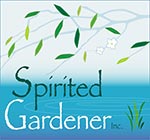The Heart of Native Gardening: It's All About TLC
Dispelling the Myth: The "No Weeding" Illusion
Many believe native gardens are "no maintenance" because native plants thrive in the wild without human help. This is a common misconception. While native plants are adapted to local conditions and need less water and fertilizer once established, they aren't entirely hands-off.A Garden is a Garden: Intentionality is Key
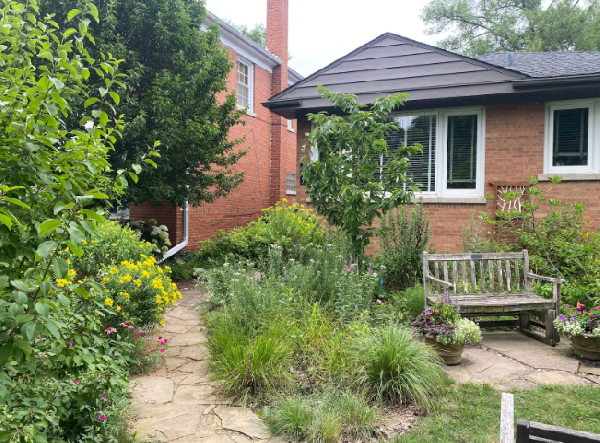 A native garden is a cultivated space, not a wild ecosystem. It lacks the complex natural balance of wild plant communities, meaning it still requires tending – or "management." This means being intentional and diligent as your garden grows, understanding that plants are dynamic and will naturally spread or change.
A native garden is a cultivated space, not a wild ecosystem. It lacks the complex natural balance of wild plant communities, meaning it still requires tending – or "management." This means being intentional and diligent as your garden grows, understanding that plants are dynamic and will naturally spread or change.Successful native gardening starts with careful research to match plants to your specific site conditions (soil, sun, slope) and to ensure they form a thriving community. While dense planting can reduce weeding, it doesn't eliminate it. You'll still need to "selectively edit" by removing or relocating plants that overcrowd others.
Similarly, less watering is possible by choosing drought-tolerant plants, but responsible water management, like rainwater harvesting, remains important. Seasonal maintenance, such as cutting back plants for spring growth or an annual mowing, is also part of the care. We also advise leaving dried plant matter to support insects and enrich the soil, recognizing that birds rely on standing gardens for food. This approach shifts gardening from a battle to a collaboration with nature.
Cultivating Healthy Relationships: Your Plants, Your Neighbors
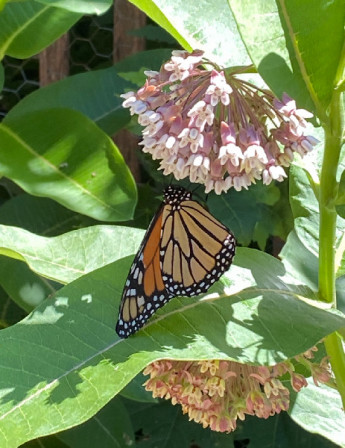
Clean Sourcing: Pesticide-Free Plants for Thriving Wildlife
Native plants have co-evolved with local wildlife, forming intricate relationships vital for countless species. They provide food and habitat for birds, pollinators, and small mammals. Harmful chemicals like insecticides, herbicides, and pesticides disrupt this balance, polluting waterways and harming beneficial insects and their predators.Neonicotinoids, for example, are systemic insecticides that make plant pollen and nectar toxic to pollinators like hummingbirds. By choosing chemical-free plants, you ensure wildlife can thrive. This encourages natural pest control, as beneficial predators like ladybirds, laceworms, and frogs return to regulate pest populations.
As we enter grass season, it's important to be mindful of pests like Japanese beetles and root weevils. Japanese beetle grubs will soon return to where they were born, and you might notice dry patches in your lawn indicating their presence. Consider using beneficial nematodes, a biological control, for grubs; always research carefully before applying to ensure it's the right solution for your specific issue and follow instructions closely. Root weevils, including the three-banded Japanese weevil, notch the edges of plant leaves as they feed. Once fed, they drop eggs, and the larvae burrow into plant roots. The best time to start spraying for these is typically in August. Always apply on a rainy or cloudy day, or after the sun has set, to maximize effectiveness and minimize harm to beneficial insects. Understanding the specific life cycles of these pests is crucial for effective and responsible treatment.

Beyond Greenery: Plants as "New Neighbors"
Native plants truly become "new neighbors" in your garden. They've co-evolved with local wildlife, creating a vital "buffet" and "safe haven." Planting them directly contributes to the intricate web of life. This relationship is about cultivating a deeper connection to the land. Indigenous stewardship methods, practiced for millennia, emphasize living in harmony with the earth, viewing living things as relationships, not just resources. This fosters respect, reciprocity, and interconnectedness. Your garden becomes a "vibrant, living laboratory," a "living, breathing, moving place" where you connect with the species you share space with. Many gardeners find peace, healing, and joy through this connection.
This relationship is about cultivating a deeper connection to the land. Indigenous stewardship methods, practiced for millennia, emphasize living in harmony with the earth, viewing living things as relationships, not just resources. This fosters respect, reciprocity, and interconnectedness. Your garden becomes a "vibrant, living laboratory," a "living, breathing, moving place" where you connect with the species you share space with. Many gardeners find peace, healing, and joy through this connection.Just like people need rest, some native plants go dormant in summer, appearing "dead" or stressed. This is a natural survival mechanism for hot, dry seasons. These resilient plants will rejuvenate when temperatures cool, provided they are well-sited and cared for. Understanding this natural cycle, and even leaving dried seed heads for birds, is part of providing "TLC."
Companion planting is a practical way to cultivate relationships among plants, where different species support each other through pest control, improved soil, and efficient space use. Using native flowers in companion planting further benefits local butterflies, bees, and birds.
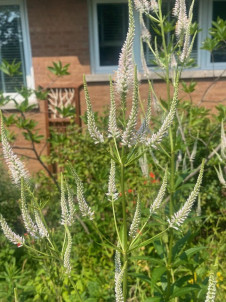 Your Garden, A Thriving Homegrown Ecosystem
Your Garden, A Thriving Homegrown Ecosystem
Embracing "TLC" in your native garden means more than just growing plants; it's actively participating in restoring local ecosystems and fostering vibrant, interconnected communities of life. This journey transforms your outdoor space into a personal "Homegrown National Park," a living testament to ecological health.This is a personal journey and a collaborative effort. The idea of a "Homegrown National Park", popularized by entomologist Doug Tallamy, suggests that every individual yard, no matter the size, is a crucial piece of a larger ecological puzzle. By nurturing a diverse native garden, you are not just caring for your own space—you're actively contributing to a network of habitats that connects with your neighbors' gardens, local parks, and larger wild spaces. This collective effort creates vital wildlife corridors and helps restore biodiversity on a scale that national parks alone cannot achieve. Happy gardening!
Eco(Fun) Fact: Embracing the "Weeds" with Benefits
Sometimes, the plants we consider "weeds" are actually hidden gems for our local ecosystem. Cultivating a discerning eye can lead to surprising benefits for wildlife and even for us!
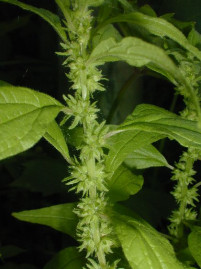
Take Pennsylvania Pellitory (Parietaria pennsylvanica) for instance. This seemingly unassuming plant, often found tucked away behind shrubs, is a crucial host plant for the native Red Admiral butterfly, and its seeds are a food source for the Lincoln Sparrow. So, if it's not bothering anything and is nestled in a back corner by your garage or alley, why pull it? Consider letting it be a secret sanctuary for these beneficial creatures. Photo credit: Illinoiswildflowers.info (Above)
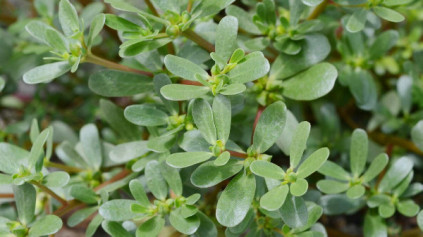
Then there's Purslane (Portulaca oleracea), a common garden "weed" that is actually edible and incredibly nutritious! Often called the "avocado of the north," it's rich in omega-3 fatty acids and vitamins. You can find it growing in vegetable beds and along garden perimeters. Feel free to harvest it for your own culinary adventures, especially if it starts to encroach on other plants. For the best flavor and tenderness, harvest Purslane in the morning; after noon, it tends to lose some of its vibrant taste. You might even find it at your local farmer's market! Photo credit: almanac.com (Above)
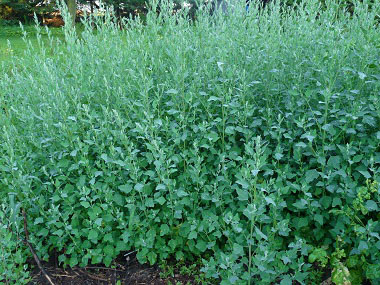
Finally, Lamb's Quarter (Chenopodium album), once known as the "spinach of Europe," can be enjoyed raw or cooked. As fall approaches, if you have a back corner of your yard you've let go a little, you might find this plant thriving. In this setting, Lamb's Quarters becomes a vital food source for migrating Juncos, who love to feed on its seeds as they pass through. It's a perfect example of how sometimes, letting nature take its course in a small part of your yard can provide immense benefits for wildlife. Photo credit: ediblewildfood.com (Above).
